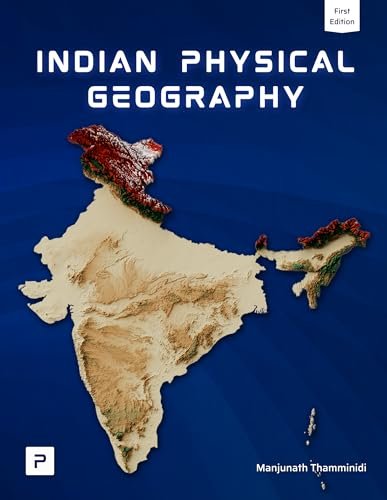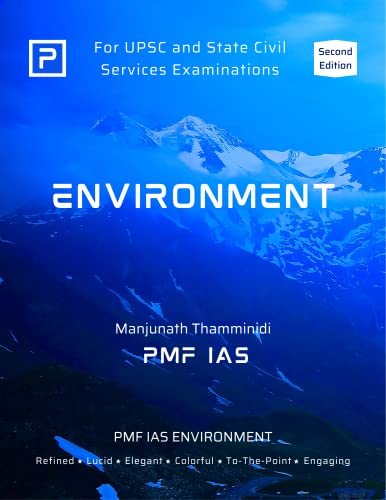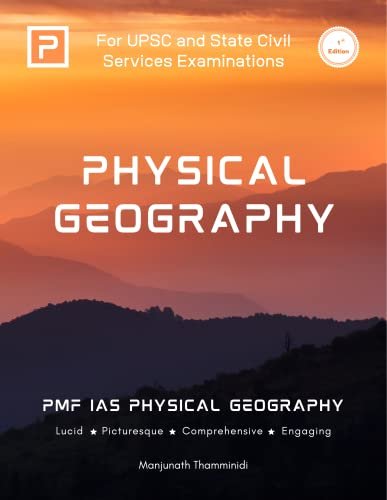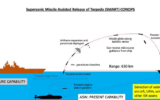
February 23 2024 Prelims Practice Questions (PPQ)
Subscribe to Never Miss an Important Update! Assured Discounts on New Products!
Must Join PMF IAS Telegram Channel & PMF IAS History Telegram Channel
- These Prelims Practice Questions (PPQs) are based on PMF IAS Daily Current Affairs.
- The daily current affairs are uploaded every day by 8 PM. You can read the Daily Current Affairs from here.
- Subscribers of the “Current Affairs” course can Download Daily Current Affairs in PDF/DOC from here.
[Quiz] Daily Prelims Practice Questions (PPQs) – February 23 2024
0 of 9 questions completed
Questions:
- 1
- 2
- 3
- 4
- 5
- 6
- 7
- 8
- 9
Information
These MCQs are based on PMF IAS Daily Current Affairs. The daily current affairs are uploaded every day by 8 PM. You can read the Daily Current Affairs from here. Subscribers of the “Current Affairs” course can Download Daily Current Affairs in PDF/DOC from here.
You have already completed the Test before. Hence you can not start it again.
Test is loading...
You must sign in or sign up to start the Test.
You have to finish following quiz, to start this Test:
Your results are here!! for" [Quiz] Daily Prelims Practice Questions (PPQs) – February 23 2024 "
0 of 9 questions answered correctly
Your time:
Time has elapsed
Your Final Score is : 0
You have attempted : 0
Number of Correct Questions : 0 and scored 0
Number of Incorrect Questions : 0 and Negative marks 0
| Average score |
|
| Your score |
|
-
Not categorized
You have attempted: 0
Number of Correct Questions: 0 and scored 0
Number of Incorrect Questions: 0 and Negative marks 0
| Pos. | Name | Entered on | Points | Result |
|---|---|---|---|---|
| Table is loading | ||||
| No data available | ||||
- 1
- 2
- 3
- 4
- 5
- 6
- 7
- 8
- 9
- Answered
- Review
-
Question 1 of 9
1. Question
Q1. {IR – International Organisations} Consider the following statements:
- Red corner notices generally follow criminal convictions, similar to the Blue Corner Notices.
- In Case of a red Corner Notice, the country issuing the request need to be the home country of the fugitive.
- In India, the Central Bureau of Investigation (CBI) is the officially designated agency to publish, maintain and update the Red Corner Notices.
How many of the above statement(s) is/are correct?
Correct
Explanation
Statement 1 is incorrect
- A blue corner notice, also known as an enquiry notice, allows police forces in member states to share critical crime-related information, such as obtaining a person’s criminal record and location and having his or her identity verified, among others.
- A red corner notice is issued by a member state to arrest a wanted criminal through extradition or any other similar lawful action.
- While blue corner notices are issued prior to the filing of criminal charges, red corner notices generally follow criminal convictions.
Statement 2 is incorrect
- Red Corner notices are issued against persons wanted by national jurisdictions for prosecution or to serve a sentence based on an arrest warrant or a court decision.
- The country issuing the request need not be the home country of the fugitive.
- Interpol acts even on the request of a country where the alleged crime has been committed.
Statement 3 is correct
- INTERPOL has designated a National Central Bureau in all its 195 member countries as a single point of contact between law enforcement agencies of that member and INTERPOL.
- In India, the Central Bureau of Investigation (CBI) is the officially designated agency to publish, maintain and update the Red Corner Notices.
Answer: (a) Only one; Difficulty Level: Medium
Incorrect
Explanation
Statement 1 is incorrect
- A blue corner notice, also known as an enquiry notice, allows police forces in member states to share critical crime-related information, such as obtaining a person’s criminal record and location and having his or her identity verified, among others.
- A red corner notice is issued by a member state to arrest a wanted criminal through extradition or any other similar lawful action.
- While blue corner notices are issued prior to the filing of criminal charges, red corner notices generally follow criminal convictions.
Statement 2 is incorrect
- Red Corner notices are issued against persons wanted by national jurisdictions for prosecution or to serve a sentence based on an arrest warrant or a court decision.
- The country issuing the request need not be the home country of the fugitive.
- Interpol acts even on the request of a country where the alleged crime has been committed.
Statement 3 is correct
- INTERPOL has designated a National Central Bureau in all its 195 member countries as a single point of contact between law enforcement agencies of that member and INTERPOL.
- In India, the Central Bureau of Investigation (CBI) is the officially designated agency to publish, maintain and update the Red Corner Notices.
Answer: (a) Only one; Difficulty Level: Medium
Unattempted
Explanation
Statement 1 is incorrect
- A blue corner notice, also known as an enquiry notice, allows police forces in member states to share critical crime-related information, such as obtaining a person’s criminal record and location and having his or her identity verified, among others.
- A red corner notice is issued by a member state to arrest a wanted criminal through extradition or any other similar lawful action.
- While blue corner notices are issued prior to the filing of criminal charges, red corner notices generally follow criminal convictions.
Statement 2 is incorrect
- Red Corner notices are issued against persons wanted by national jurisdictions for prosecution or to serve a sentence based on an arrest warrant or a court decision.
- The country issuing the request need not be the home country of the fugitive.
- Interpol acts even on the request of a country where the alleged crime has been committed.
Statement 3 is correct
- INTERPOL has designated a National Central Bureau in all its 195 member countries as a single point of contact between law enforcement agencies of that member and INTERPOL.
- In India, the Central Bureau of Investigation (CBI) is the officially designated agency to publish, maintain and update the Red Corner Notices.
Answer: (a) Only one; Difficulty Level: Medium
-
Question 2 of 9
2. Question
Q2. {Prelims – Festivals} Paruveta Utsavam, recently seen in news, is celebrated in which state?
Correct
Explanation
- The ‘Paruveta‘ (mock hunting) festival is celebrated annually at the Sri Narasimha Swamy temple in Ahobilam, Andhra Pradesh.
- As far as the origin of the festival is concerned, it dates back to the incarnation of Lord Vishnu as Narasimha, the man-lion, in Ahobilam.
- It is a 40-day spiritual odyssey that not only showcases the depth of India’s intangible cultural heritage but also embodies the principles of a casteless society.
- During this time, the deity from the inner sanctum of the temple is carried to the 32 Chenchu tribal settlements surrounding Ahobilam.
- Chenchu Tribe:
- The Chenchus, also called ‘Chenchuvaru‘ or ‘Chenchwar’ is numerically the smallest Scheduled Tribe of Odisha.
- They mainly inhabit in the Nallamalai Hill ranges in the southeastern part of India.
- They are an aboriginal semi-nomadic tribe of the central hill religions of Andhra Pradesh.
- Their traditional way of life has been based on hunting and food gathering.
- Chenchu tribes are Particularly Vulnerable Tribal Group (PVTGs) of Andhra Pradesh and Telangana.
Answer: (c) Andhra Pradesh; Difficulty Level: Medium
Incorrect
Explanation
- The ‘Paruveta‘ (mock hunting) festival is celebrated annually at the Sri Narasimha Swamy temple in Ahobilam, Andhra Pradesh.
- As far as the origin of the festival is concerned, it dates back to the incarnation of Lord Vishnu as Narasimha, the man-lion, in Ahobilam.
- It is a 40-day spiritual odyssey that not only showcases the depth of India’s intangible cultural heritage but also embodies the principles of a casteless society.
- During this time, the deity from the inner sanctum of the temple is carried to the 32 Chenchu tribal settlements surrounding Ahobilam.
- Chenchu Tribe:
- The Chenchus, also called ‘Chenchuvaru‘ or ‘Chenchwar’ is numerically the smallest Scheduled Tribe of Odisha.
- They mainly inhabit in the Nallamalai Hill ranges in the southeastern part of India.
- They are an aboriginal semi-nomadic tribe of the central hill religions of Andhra Pradesh.
- Their traditional way of life has been based on hunting and food gathering.
- Chenchu tribes are Particularly Vulnerable Tribal Group (PVTGs) of Andhra Pradesh and Telangana.
Answer: (c) Andhra Pradesh; Difficulty Level: Medium
Unattempted
Explanation
- The ‘Paruveta‘ (mock hunting) festival is celebrated annually at the Sri Narasimha Swamy temple in Ahobilam, Andhra Pradesh.
- As far as the origin of the festival is concerned, it dates back to the incarnation of Lord Vishnu as Narasimha, the man-lion, in Ahobilam.
- It is a 40-day spiritual odyssey that not only showcases the depth of India’s intangible cultural heritage but also embodies the principles of a casteless society.
- During this time, the deity from the inner sanctum of the temple is carried to the 32 Chenchu tribal settlements surrounding Ahobilam.
- Chenchu Tribe:
- The Chenchus, also called ‘Chenchuvaru‘ or ‘Chenchwar’ is numerically the smallest Scheduled Tribe of Odisha.
- They mainly inhabit in the Nallamalai Hill ranges in the southeastern part of India.
- They are an aboriginal semi-nomadic tribe of the central hill religions of Andhra Pradesh.
- Their traditional way of life has been based on hunting and food gathering.
- Chenchu tribes are Particularly Vulnerable Tribal Group (PVTGs) of Andhra Pradesh and Telangana.
Answer: (c) Andhra Pradesh; Difficulty Level: Medium
-
Question 3 of 9
3. Question
Q3. {Prelims – Bio – Disease} Consider the following statements with respect to Alaska Pox Virus:
- It is a Zoonotic Virus that was first discovered in Alaska, USA, in 2015.
- It is a single-stranded DNA virus belonging to the same genus (Orthopoxvirus) as smallpox, monkey pox, and cowpox.
- Symptoms of Alaska pox have included one or more skin lesions (bumps or pustules) and other symptoms like swollen lymph nodes and joint and/or muscle pain.
Which of the above statement is/are incorrect?
Correct
Explanation
Statement 1 is correct
- Alaska pox was first identified in 2015 in a woman from Fairbanks, Alaska, presenting with skin lesions.
- Orthopox virus are zoonotic viruses that can infect various mammals, including humans.
Statement 2 is incorrect
- It is a double-stranded DNA virus belonging to the same genus (Orthopoxvirus) as smallpox, monkey pox, and cowpox.
- Current evidence indicates that the Alaska pox virus primarily occurs in small mammals.
- The virus has been most commonly identified in red-backed voles and shrews.

Statement 3 is correct
- Signs and Symptoms:
- Symptoms of Alaska pox have included one or more skin lesions (bumps or pustules) and other symptoms like swollen lymph nodes and joint and/or muscle pain.
- Nearly all patients had mild illnesses that resolved on their own after a few weeks.
- Immune compromised people might be at increased risk for more severe illness.
Answer: (a) Only one; Difficulty Level: Medium
Incorrect
Explanation
Statement 1 is correct
- Alaska pox was first identified in 2015 in a woman from Fairbanks, Alaska, presenting with skin lesions.
- Orthopox virus are zoonotic viruses that can infect various mammals, including humans.
Statement 2 is incorrect
- It is a double-stranded DNA virus belonging to the same genus (Orthopoxvirus) as smallpox, monkey pox, and cowpox.
- Current evidence indicates that the Alaska pox virus primarily occurs in small mammals.
- The virus has been most commonly identified in red-backed voles and shrews.

Statement 3 is correct
- Signs and Symptoms:
- Symptoms of Alaska pox have included one or more skin lesions (bumps or pustules) and other symptoms like swollen lymph nodes and joint and/or muscle pain.
- Nearly all patients had mild illnesses that resolved on their own after a few weeks.
- Immune compromised people might be at increased risk for more severe illness.
Answer: (a) Only one; Difficulty Level: Medium
Unattempted
Explanation
Statement 1 is correct
- Alaska pox was first identified in 2015 in a woman from Fairbanks, Alaska, presenting with skin lesions.
- Orthopox virus are zoonotic viruses that can infect various mammals, including humans.
Statement 2 is incorrect
- It is a double-stranded DNA virus belonging to the same genus (Orthopoxvirus) as smallpox, monkey pox, and cowpox.
- Current evidence indicates that the Alaska pox virus primarily occurs in small mammals.
- The virus has been most commonly identified in red-backed voles and shrews.

Statement 3 is correct
- Signs and Symptoms:
- Symptoms of Alaska pox have included one or more skin lesions (bumps or pustules) and other symptoms like swollen lymph nodes and joint and/or muscle pain.
- Nearly all patients had mild illnesses that resolved on their own after a few weeks.
- Immune compromised people might be at increased risk for more severe illness.
Answer: (a) Only one; Difficulty Level: Medium
-
Question 4 of 9
4. Question
Q4. {Sci – Bio – Diseases} Consider the following statements with respect to Kala Azar:
- Leishmania donovani is the only parasite causing this disease worldwide.
- The parasite primarily infects Reticuloendothelial system and can be found in abundance in bone marrow, spleen and liver.
Which of the above statement(s) is/are correct?
Correct
Explanation
Statement 1 is incorrect
- Kala Azar is commonly referred to as “black sickness” due to the greyish or blackish discolouration of the skin during infection.
- This disease is the second-largest parasitic killer in the world (after malaria).
- It is a slow progressing indigenous disease caused by a protozoan parasite of genus Leishmania.
- In India, Leishmania donovani is the only parasite causing this disease.
- Leishmania donovani, the causative organism of visceral leishmaniasis (kala-azar) in Africa, the Middle East, Mediterranean coasts, Asia and South America.
- Leishmania tropica, the causative organism of cutaneous leishmaniasis in the Middle East, and
- Leishmania braziliensis, the causative organism of mucocutaneous leishmaniasis in South America.
Statement 2 is correct
- The parasite primarily infects reticuloendothelial system and may be found in abundance in bone marrow, spleen and liver.
- It is transmitted through the bites of infected female phlebotomine sandflies.
- The parasite migrates to the internal organs such as the liver, spleen (hence “visceral”), and bone marrow, and, if left untreated, will almost always result in the death of the host.
- Symptoms: Fever, weight loss, fatigue, anaemia, and substantial swelling of the liver and spleen.
Answer: (b) 2 Only; Difficulty Level: Medium
Incorrect
Explanation
Statement 1 is incorrect
- Kala Azar is commonly referred to as “black sickness” due to the greyish or blackish discolouration of the skin during infection.
- This disease is the second-largest parasitic killer in the world (after malaria).
- It is a slow progressing indigenous disease caused by a protozoan parasite of genus Leishmania.
- In India, Leishmania donovani is the only parasite causing this disease.
- Leishmania donovani, the causative organism of visceral leishmaniasis (kala-azar) in Africa, the Middle East, Mediterranean coasts, Asia and South America.
- Leishmania tropica, the causative organism of cutaneous leishmaniasis in the Middle East, and
- Leishmania braziliensis, the causative organism of mucocutaneous leishmaniasis in South America.
Statement 2 is correct
- The parasite primarily infects reticuloendothelial system and may be found in abundance in bone marrow, spleen and liver.
- It is transmitted through the bites of infected female phlebotomine sandflies.
- The parasite migrates to the internal organs such as the liver, spleen (hence “visceral”), and bone marrow, and, if left untreated, will almost always result in the death of the host.
- Symptoms: Fever, weight loss, fatigue, anaemia, and substantial swelling of the liver and spleen.
Answer: (b) 2 Only; Difficulty Level: Medium
Unattempted
Explanation
Statement 1 is incorrect
- Kala Azar is commonly referred to as “black sickness” due to the greyish or blackish discolouration of the skin during infection.
- This disease is the second-largest parasitic killer in the world (after malaria).
- It is a slow progressing indigenous disease caused by a protozoan parasite of genus Leishmania.
- In India, Leishmania donovani is the only parasite causing this disease.
- Leishmania donovani, the causative organism of visceral leishmaniasis (kala-azar) in Africa, the Middle East, Mediterranean coasts, Asia and South America.
- Leishmania tropica, the causative organism of cutaneous leishmaniasis in the Middle East, and
- Leishmania braziliensis, the causative organism of mucocutaneous leishmaniasis in South America.
Statement 2 is correct
- The parasite primarily infects reticuloendothelial system and may be found in abundance in bone marrow, spleen and liver.
- It is transmitted through the bites of infected female phlebotomine sandflies.
- The parasite migrates to the internal organs such as the liver, spleen (hence “visceral”), and bone marrow, and, if left untreated, will almost always result in the death of the host.
- Symptoms: Fever, weight loss, fatigue, anaemia, and substantial swelling of the liver and spleen.
Answer: (b) 2 Only; Difficulty Level: Medium
-
Question 5 of 9
5. Question
Q5. {Envi – Conservation} Consider the following statements with respect to National Board for Wildlife (NBWL):
- It is chaired by the Prime Minister with others members including chief of army staff and defence secretary.
- It is a Statutory Board.
- The board has to meet at least twice a year.
Which of the above statement(s) is/are correct?
Correct
Explanation
Statement 1 is correct
- The National Board for Wildlife has 47 members which is chaired by the Prime Minister.
- Among 47 members, 19 members are ex-officio members.
- Every new government constitutes a new board, based on the provisions of the Wild Life (Protection) Act, 1972, with the new PM as the chair.
- The Minister in charge of the Ministry of Environment & Forests in the Central Government is the Vice-Chairperson.
- The Additional Director General of Forests (WL) & Director, Wildlife Preservation is the Member-Secretary to the Board.
- The members of the board also include chief of army staff and defence secretary.
- Wildlife conservation is a multi-disciplinary effort, so the members of the members are drawn from diverse fields.
Statement 2 is correct
- The National Board for Wildlife (NBWL) is a “statutory board” constituted under the Wild Life (Protection) Act, 1972.
- However, originally enacted in 1972, did not provide for the NBWL and it is provided under the Wild Life (Protection) Amendment Act of 2002 replacing the Indian Board for Wildlife.
- The Board is responsible for promotion of conservation and development of wildlife and forests.
Statement 3 is correct
- Under the provisions of the Wild Life (Protection) Act, 1972 (WLPA), the NBWL can constitute a Standing Committee, but the board has to meet at least twice a year.
- The Standing Committee’s function is to regulate land diversion within Protected Areas and Eco Sensitive Zones, making it a purely project clearance body.
Answer: (c) All; Difficulty Level: Medium
Incorrect
Explanation
Statement 1 is correct
- The National Board for Wildlife has 47 members which is chaired by the Prime Minister.
- Among 47 members, 19 members are ex-officio members.
- Every new government constitutes a new board, based on the provisions of the Wild Life (Protection) Act, 1972, with the new PM as the chair.
- The Minister in charge of the Ministry of Environment & Forests in the Central Government is the Vice-Chairperson.
- The Additional Director General of Forests (WL) & Director, Wildlife Preservation is the Member-Secretary to the Board.
- The members of the board also include chief of army staff and defence secretary.
- Wildlife conservation is a multi-disciplinary effort, so the members of the members are drawn from diverse fields.
Statement 2 is correct
- The National Board for Wildlife (NBWL) is a “statutory board” constituted under the Wild Life (Protection) Act, 1972.
- However, originally enacted in 1972, did not provide for the NBWL and it is provided under the Wild Life (Protection) Amendment Act of 2002 replacing the Indian Board for Wildlife.
- The Board is responsible for promotion of conservation and development of wildlife and forests.
Statement 3 is correct
- Under the provisions of the Wild Life (Protection) Act, 1972 (WLPA), the NBWL can constitute a Standing Committee, but the board has to meet at least twice a year.
- The Standing Committee’s function is to regulate land diversion within Protected Areas and Eco Sensitive Zones, making it a purely project clearance body.
Answer: (c) All; Difficulty Level: Medium
Unattempted
Explanation
Statement 1 is correct
- The National Board for Wildlife has 47 members which is chaired by the Prime Minister.
- Among 47 members, 19 members are ex-officio members.
- Every new government constitutes a new board, based on the provisions of the Wild Life (Protection) Act, 1972, with the new PM as the chair.
- The Minister in charge of the Ministry of Environment & Forests in the Central Government is the Vice-Chairperson.
- The Additional Director General of Forests (WL) & Director, Wildlife Preservation is the Member-Secretary to the Board.
- The members of the board also include chief of army staff and defence secretary.
- Wildlife conservation is a multi-disciplinary effort, so the members of the members are drawn from diverse fields.
Statement 2 is correct
- The National Board for Wildlife (NBWL) is a “statutory board” constituted under the Wild Life (Protection) Act, 1972.
- However, originally enacted in 1972, did not provide for the NBWL and it is provided under the Wild Life (Protection) Amendment Act of 2002 replacing the Indian Board for Wildlife.
- The Board is responsible for promotion of conservation and development of wildlife and forests.
Statement 3 is correct
- Under the provisions of the Wild Life (Protection) Act, 1972 (WLPA), the NBWL can constitute a Standing Committee, but the board has to meet at least twice a year.
- The Standing Committee’s function is to regulate land diversion within Protected Areas and Eco Sensitive Zones, making it a purely project clearance body.
Answer: (c) All; Difficulty Level: Medium
-
Question 6 of 9
6. Question
Q6. {Infra – Initiatives} Kiru Hydel Power Project, recently seen in news, is built over which river?
Correct
Explanation
- Kiru hydroelectric power project is a run-of-the-river scheme being developed over the Chenab River in the Doha district in Jammu and Kashmir (J&K), India.
- The project is being developed by Chenab Valley Power Projects (CVPP) (a joint venture between National Hydroelectric Power Corporation (NHPC, 49%), Jammu & Kashmir State Power Development Corporation (JKSPDC, 49%) and Power Trading Corporation (PTC, 2%)).
- Beneficiary States: J&K, Himachal Pradesh, Punjab, Haryana, Uttar Pradesh, Uttaranchal, Rajasthan, Union territories of Chandigarh & Delhi.
- Run-of-the-river hydroelectric systems generate electricity using flowing water without the need for a large dam and reservoir.
Answer: (a) Chenab River; Difficulty Level: Medium
Incorrect
Explanation
- Kiru hydroelectric power project is a run-of-the-river scheme being developed over the Chenab River in the Doha district in Jammu and Kashmir (J&K), India.
- The project is being developed by Chenab Valley Power Projects (CVPP) (a joint venture between National Hydroelectric Power Corporation (NHPC, 49%), Jammu & Kashmir State Power Development Corporation (JKSPDC, 49%) and Power Trading Corporation (PTC, 2%)).
- Beneficiary States: J&K, Himachal Pradesh, Punjab, Haryana, Uttar Pradesh, Uttaranchal, Rajasthan, Union territories of Chandigarh & Delhi.
- Run-of-the-river hydroelectric systems generate electricity using flowing water without the need for a large dam and reservoir.
Answer: (a) Chenab River; Difficulty Level: Medium
Unattempted
Explanation
- Kiru hydroelectric power project is a run-of-the-river scheme being developed over the Chenab River in the Doha district in Jammu and Kashmir (J&K), India.
- The project is being developed by Chenab Valley Power Projects (CVPP) (a joint venture between National Hydroelectric Power Corporation (NHPC, 49%), Jammu & Kashmir State Power Development Corporation (JKSPDC, 49%) and Power Trading Corporation (PTC, 2%)).
- Beneficiary States: J&K, Himachal Pradesh, Punjab, Haryana, Uttar Pradesh, Uttaranchal, Rajasthan, Union territories of Chandigarh & Delhi.
- Run-of-the-river hydroelectric systems generate electricity using flowing water without the need for a large dam and reservoir.
Answer: (a) Chenab River; Difficulty Level: Medium
-
Question 7 of 9
7. Question
Q7. {Prelims – A&C – Culture} Consider the following statements about Badaga:
- It is a 2,300-year-old Dravidian language spoken in Nilgris district, located at the tri-junction of Kerala, Karnataka and Tamil Nadu.
- It is categorised as a “definitely endangered language” by UNESCO.
- Badaga is a unique ethnic group categorized as a Scheduled Tribe by the Tamil Nadu Government.
How many of the above statement(s) is/are incorrect?
Correct
Explanation
Statement 1 is correct
- Badaga is a unique ethnic group in the state of Tamil Nadu.
- It is a 2,300-year-old Dravidian language spoken by the Badaga people in the Nilgris and bears striking similarities to Kannada.
- According to the 2011 Census, Badaga is predominantly spoken in the Nilgiris, a hilly district located in Tamil Nadu that shares its borders with Kerala and Karnataka.
Statement 2 is correct
- It is categorised as a “definitely endangered language” by UNESCO and categorised as a dialect of Kannada and comes from the Tamil-Kannada branch of Dravidian languages.
Statement 3 is incorrect
- It is listed in the database of Worlds Indigenous Peoples by the United Nations Mountain Partnership.
- Mountain Partnership is a United Nations alliance of partners dedicated to improving the lives of mountain peoples and protecting mountain environments around the world.
- The 2011 Nigiris district census handbook classifies Badagas, along with other indigenous groups such as Todas, Kotas, Kurumbas, and Irulas, as the district’s “original inhabitants”.
- The Tamil Nadu government, however, lists them as a “backward class” group found predominantly in the Gudalur, Coonoor, and Kotagiri regions of the district.
Answer: (a) Only one; Difficulty Level: Medium
Incorrect
Explanation
Statement 1 is correct
- Badaga is a unique ethnic group in the state of Tamil Nadu.
- It is a 2,300-year-old Dravidian language spoken by the Badaga people in the Nilgris and bears striking similarities to Kannada.
- According to the 2011 Census, Badaga is predominantly spoken in the Nilgiris, a hilly district located in Tamil Nadu that shares its borders with Kerala and Karnataka.
Statement 2 is correct
- It is categorised as a “definitely endangered language” by UNESCO and categorised as a dialect of Kannada and comes from the Tamil-Kannada branch of Dravidian languages.
Statement 3 is incorrect
- It is listed in the database of Worlds Indigenous Peoples by the United Nations Mountain Partnership.
- Mountain Partnership is a United Nations alliance of partners dedicated to improving the lives of mountain peoples and protecting mountain environments around the world.
- The 2011 Nigiris district census handbook classifies Badagas, along with other indigenous groups such as Todas, Kotas, Kurumbas, and Irulas, as the district’s “original inhabitants”.
- The Tamil Nadu government, however, lists them as a “backward class” group found predominantly in the Gudalur, Coonoor, and Kotagiri regions of the district.
Answer: (a) Only one; Difficulty Level: Medium
Unattempted
Explanation
Statement 1 is correct
- Badaga is a unique ethnic group in the state of Tamil Nadu.
- It is a 2,300-year-old Dravidian language spoken by the Badaga people in the Nilgris and bears striking similarities to Kannada.
- According to the 2011 Census, Badaga is predominantly spoken in the Nilgiris, a hilly district located in Tamil Nadu that shares its borders with Kerala and Karnataka.
Statement 2 is correct
- It is categorised as a “definitely endangered language” by UNESCO and categorised as a dialect of Kannada and comes from the Tamil-Kannada branch of Dravidian languages.
Statement 3 is incorrect
- It is listed in the database of Worlds Indigenous Peoples by the United Nations Mountain Partnership.
- Mountain Partnership is a United Nations alliance of partners dedicated to improving the lives of mountain peoples and protecting mountain environments around the world.
- The 2011 Nigiris district census handbook classifies Badagas, along with other indigenous groups such as Todas, Kotas, Kurumbas, and Irulas, as the district’s “original inhabitants”.
- The Tamil Nadu government, however, lists them as a “backward class” group found predominantly in the Gudalur, Coonoor, and Kotagiri regions of the district.
Answer: (a) Only one; Difficulty Level: Medium
-
Question 8 of 9
8. Question
Q8. {Envi – Species} Consider the following statements about Asiatic Black Bear:
- Out of the seven subspecies of Asiatic Black Bear, only the Himalayan Black Bear subspecies are found in India.
- Centre for Bear Rehabilitation and Conservation in Arunachal Pradesh is the only rehabilitation facility for Asiatic bears in India.
- They are especially hunted for their gall bladders which usually have demands in traditional Chinese medicine.
How many of the above statement(s) is/are incorrect?
Correct
Explanation
Statement 1 is correct
- Asiatic black bear (Ursus thibetanus) is also known as Moon bear.
- The Asiatic black bear has 7 subspecies, out of which we find the Himalayan Black Bear (Ursus thibetanus laniger) subspecies in India.
- In India, The Himalayan Black Bear is distributed across Arunachal Pradesh, Assam, Sikkim, and the union territory of Jammu and Kashmir (J&K).
- They have a pale yellow or whitish crescent moon shaped patch on their chest which is their most distinguishable physical feature.
Statement 2 is correct
- Centre for Bear Rehabilitation and Conservation (CBRC) is the only rehabilitation facility for Asiatic Black Bear in India.
- It is situated at the Pakke Tiger Reserve in Arunachal Pradesh.
- The Asiatic black bear occupies a narrow band from south-eastern Iran to Myanmar, across the foothills of the Himalayas.
Statement 3 is correct
- Today, Asiatic Black Bears are threatened by a number of factors starting with climate change, habitat loss, habitat degradation and poaching for body parts.
- The loss of habitat is caused by expansion of human settlements, encroachment of wild places due to roadways, infrastructure projects and so on.
- In India, less than 10% of the species’ range is under Protected Areas (PAs) and areas outside PAs fall victim to developmental projects, and fuelwood and timber extraction.
- Moreover, they are hunted for their skins, paws and especially gall bladders, which usually have demands in traditional Chinese medicine.

- Conservation:
- It is protected under the schedule 1 of the Wildlife (protection) Act of 1972.
- It is protected under the appendix 1 of the CITES (the Convention on International Trade in Endangered Species of Wild Fauna and Flora).
- It is listed as vulnerable in the IUCN red list.
Answer: (d) None; Difficulty Level: Medium
Incorrect
Explanation
Statement 1 is correct
- Asiatic black bear (Ursus thibetanus) is also known as Moon bear.
- The Asiatic black bear has 7 subspecies, out of which we find the Himalayan Black Bear (Ursus thibetanus laniger) subspecies in India.
- In India, The Himalayan Black Bear is distributed across Arunachal Pradesh, Assam, Sikkim, and the union territory of Jammu and Kashmir (J&K).
- They have a pale yellow or whitish crescent moon shaped patch on their chest which is their most distinguishable physical feature.
Statement 2 is correct
- Centre for Bear Rehabilitation and Conservation (CBRC) is the only rehabilitation facility for Asiatic Black Bear in India.
- It is situated at the Pakke Tiger Reserve in Arunachal Pradesh.
- The Asiatic black bear occupies a narrow band from south-eastern Iran to Myanmar, across the foothills of the Himalayas.
Statement 3 is correct
- Today, Asiatic Black Bears are threatened by a number of factors starting with climate change, habitat loss, habitat degradation and poaching for body parts.
- The loss of habitat is caused by expansion of human settlements, encroachment of wild places due to roadways, infrastructure projects and so on.
- In India, less than 10% of the species’ range is under Protected Areas (PAs) and areas outside PAs fall victim to developmental projects, and fuelwood and timber extraction.
- Moreover, they are hunted for their skins, paws and especially gall bladders, which usually have demands in traditional Chinese medicine.

- Conservation:
- It is protected under the schedule 1 of the Wildlife (protection) Act of 1972.
- It is protected under the appendix 1 of the CITES (the Convention on International Trade in Endangered Species of Wild Fauna and Flora).
- It is listed as vulnerable in the IUCN red list.
Answer: (d) None; Difficulty Level: Medium
Unattempted
Explanation
Statement 1 is correct
- Asiatic black bear (Ursus thibetanus) is also known as Moon bear.
- The Asiatic black bear has 7 subspecies, out of which we find the Himalayan Black Bear (Ursus thibetanus laniger) subspecies in India.
- In India, The Himalayan Black Bear is distributed across Arunachal Pradesh, Assam, Sikkim, and the union territory of Jammu and Kashmir (J&K).
- They have a pale yellow or whitish crescent moon shaped patch on their chest which is their most distinguishable physical feature.
Statement 2 is correct
- Centre for Bear Rehabilitation and Conservation (CBRC) is the only rehabilitation facility for Asiatic Black Bear in India.
- It is situated at the Pakke Tiger Reserve in Arunachal Pradesh.
- The Asiatic black bear occupies a narrow band from south-eastern Iran to Myanmar, across the foothills of the Himalayas.
Statement 3 is correct
- Today, Asiatic Black Bears are threatened by a number of factors starting with climate change, habitat loss, habitat degradation and poaching for body parts.
- The loss of habitat is caused by expansion of human settlements, encroachment of wild places due to roadways, infrastructure projects and so on.
- In India, less than 10% of the species’ range is under Protected Areas (PAs) and areas outside PAs fall victim to developmental projects, and fuelwood and timber extraction.
- Moreover, they are hunted for their skins, paws and especially gall bladders, which usually have demands in traditional Chinese medicine.

- Conservation:
- It is protected under the schedule 1 of the Wildlife (protection) Act of 1972.
- It is protected under the appendix 1 of the CITES (the Convention on International Trade in Endangered Species of Wild Fauna and Flora).
- It is listed as vulnerable in the IUCN red list.
Answer: (d) None; Difficulty Level: Medium
-
Question 9 of 9
9. Question
Q9. {Prelims – In News} Which of the following best defines the term Micellar Water?
Correct
Explanation
- Micellar water is a product that is commonly used to remove make-up.
- It’s a very effective cleanser and many people use in their skincare routine.
- Micellar water products contain micelles, a cluster of molecules that are very effective at removing oily substances.
- The micelles in micellar water are formed by special molecules known as surfactants.
- Surfactant stands for surface active agent.
- Surfactants can be found in dishwashing detergent, body wash, shampoo, toothpaste and even many foods.
- Naturally occurring surfactants such as lecithin from egg yolk and various proteins from milk are used for the preparation of many food products such as mayonnaise, salad creams, dressings, and deserts.
- In all of these cases, they are there to help the water interact with the dirt and oils and micellar water is no different.
Answer: (c) Water formed by surfactants that can help cleanse and tone the skin; Difficulty Level: Easy
Incorrect
Explanation
- Micellar water is a product that is commonly used to remove make-up.
- It’s a very effective cleanser and many people use in their skincare routine.
- Micellar water products contain micelles, a cluster of molecules that are very effective at removing oily substances.
- The micelles in micellar water are formed by special molecules known as surfactants.
- Surfactant stands for surface active agent.
- Surfactants can be found in dishwashing detergent, body wash, shampoo, toothpaste and even many foods.
- Naturally occurring surfactants such as lecithin from egg yolk and various proteins from milk are used for the preparation of many food products such as mayonnaise, salad creams, dressings, and deserts.
- In all of these cases, they are there to help the water interact with the dirt and oils and micellar water is no different.
Answer: (c) Water formed by surfactants that can help cleanse and tone the skin; Difficulty Level: Easy
Unattempted
Explanation
- Micellar water is a product that is commonly used to remove make-up.
- It’s a very effective cleanser and many people use in their skincare routine.
- Micellar water products contain micelles, a cluster of molecules that are very effective at removing oily substances.
- The micelles in micellar water are formed by special molecules known as surfactants.
- Surfactant stands for surface active agent.
- Surfactants can be found in dishwashing detergent, body wash, shampoo, toothpaste and even many foods.
- Naturally occurring surfactants such as lecithin from egg yolk and various proteins from milk are used for the preparation of many food products such as mayonnaise, salad creams, dressings, and deserts.
- In all of these cases, they are there to help the water interact with the dirt and oils and micellar water is no different.
Answer: (c) Water formed by surfactants that can help cleanse and tone the skin; Difficulty Level: Easy
Newsletter Updates
Subscribe to our newsletter and never miss an important update!
Assured Discounts on our New Products!
Related Posts

March 06 2024 Prelims Practice Questions (PPQs)

January 01-02 2024 Prelims Practice Questions (PPQs)

February 29 2024 Prelims Practice Questions (PPQs)

April 01 2024 Prelims Practice Questions (PPQs)

February 16 2024 Prelims Practice Questions (PPQ)

April 17 2024 Prelims Practice Questions (PPQs)

Daily Prelims Practise Questions (PPQs) – October 20 2023





![PMF IAS Environment for UPSC 2022-23 [paperback] PMF IAS [Nov 30, 2021]…](https://pmfias.b-cdn.net/wp-content/uploads/2024/04/pmfiasenvironmentforupsc2022-23paperbackpmfiasnov302021.jpg)




